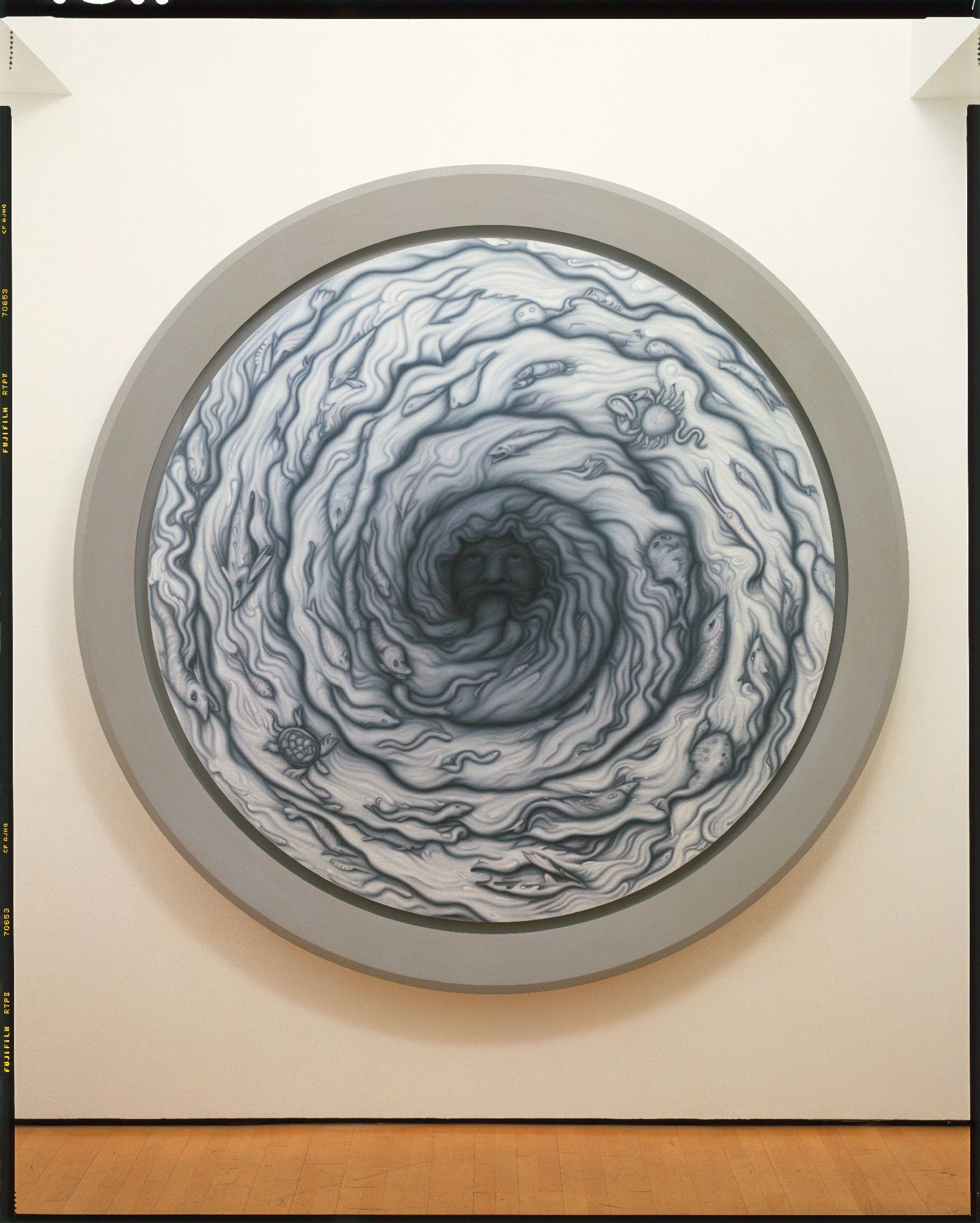"The Abhorrence of Virtue and the Love of Vice" title bears an uncanny echo of the Taliban’s “Ministry for the Promotion of Virtue and Prevention of Vice,” the body indirectly connected to the attack on the World Trade Center. Yet the title itself had surfaced for the Artist months earlier at the Bethnal Green Toy Museum . That it happened to be installed at the gallery in London on 9/11 lent the piece an uneasy resonance.
At first glance, The Abhorrence of Virtue and the Love of Vice appears as a vortex: a circular field of churning greys, fish and crustaceans dragged in its current, faces flickering in and out of dissolution. Step closer and the spiral clarifies into something older and more troubling-the mouth of a bearded god from antiquity, expelling a torrent of poisoned water. The composition recalls a classical tondo, but instead of balance or harmony, it offers collapse. Diseased forms, amphibian and human, swirl in a grim ecology that is at once mythological and entirely contemporary. Pollution here is not just environmental but moral: a universe where corruption is the only currency, where virtue itself is dragged down into the whirlpool. Alexander’s surface is restrained-monochrome, almost clinical—but never still. Flecks of pink and orange erupt through the greys, suggesting sores, infection, chemical growth. The painting holds the viewer between attraction and revulsion: caught by the beauty of its symmetry, only to recoil at its subject matter. Like Bosch’s infernal scenes, or Botticelli’s illustrations for Dante, the work imagines damnation not as a distant fable but as a lived reality. The great circle, a perfect frame, becomes a trap. Within it, all things-natural, human, divine-are contaminated, recirculated, and undone. And yet the painting resists closure. The god’s face remains, half-submerged but still present. The spiral does not finish its collapse; it keeps turning. In that unresolved motion lies the painting’s power: a reminder that corruption is not an end-state but a process, one we are already inside.
Exhibited:
The Abhorrence of Virtue and the Love of Vice, Anthony Reynolds Gallery, London 2001
